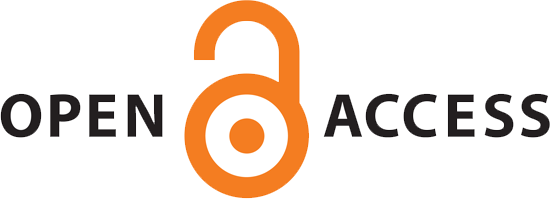A Comprehensive Study on Antibiotic Prophylaxis Practices Across Diverse Surgical Modalities
Abstract
Background: Surgical antimicrobial prophylaxis (SAP) is critical for preventing surgical site infections (SSIs). However, inappropriate use of SAP contributes to antibiotic resistance. This study evaluated compliance with the American Society of Health-System Pharmacists (ASHP) SAP guidelines at a tertiary care hospital in India and assessed the implications for SSI prevention and antimicrobial stewardship.
Methods: A prospective observational study was conducted from June–August 2024, analyzing 95 surgical cases. SAP practices were audited against the ASHP guidelines for five parameters: indication, antibiotic choice, timing (pre-incision 30–60 min), route (IV), and duration (< 24h postoperatively). Data were collected systematically from electronic records and analyzed for compliance rates.
Results: Overall, adherence to the SAP guidelines was 99.4%, and compliance was highest for antibiotic selection (100%), dosing (100%), and postoperative duration (100%). Preoperative timing compliance was 97%, while 6% received unjustified prophylaxis. Elective surgeries (67%) predominated, with ceftriaxone (31%) and cefuroxime (31%) being the most prescribed antibiotics. Moreover, a significant gender disparity was observed, mostly (76%) in male patients.
Conclusion: Near-perfect compliance with the SAP guidelines is achievable in resource-limited settings, demonstrating that strict adherence to the ASHP guidelines minimizes unnecessary antibiotic use while maintaining SSI prevention efficacy. The 6% unjustified prophylaxis rate highlights an opportunity for stewardship refinement. These findings provide a replicable model for optimizing SAP in global surgical practice.
Bucknor A, Pedreira R, Bhat D, Zamani M, Nugent N, Furnas HJ. Comparing different pathways in medical education and surgical training: a global survey of surgeons. Plast Reconstr Surg Glob Open. 2024;12(10):e6224.
Moparthi KP, Javed H, Kumari M, Pavani P, Paladini A, Saleem A, et al. Acute care surgery: navigating recent developments, protocols, and challenges in the comprehensive management of surgical emergencies. Cureus. 2024;16(1):e51676.
Athanasopoulos M, Samara P, Athanasopoulos I. Advances in 3D inner ear reconstruction software for cochlear implants: a comprehensive review. Methods Protoc. 2024;7(3):46.
Topolewski P, Szplit D, Kobiela J, Łaski D, Stepaniak P, Stefaniak TJ. Reasons for day-of-surgery cancellation of elective surgical procedures during the COVID-19 pandemic compared to pre- and post-COVID-19 periods. Cureus. 2024;16(11):e74205.
Farid Y. A call for guidelines and regulatory body in adopting artificial intelligence for plastic surgeons. Plast Reconstr Surg Glob Open. 2023;11(10):e5340.
Saikali S, Covas Moschovas M, Gamal A, Reddy S, Rogers T, Patel V. Telesurgery: humanitarian and surgical benefits while navigating technologic and administrative challenges. J Robot Surg. 2024;18(1):1-7.
Eckmann C, Aghdassi SJ, Brinkmann A, Pletz M, Rademacher J. Perioperative antibiotic prophylaxis: indications and modalities for the prevention of postoperative wound infection. Dtsch Arztebl Int. 2024;121(7):233-242.
Lak HT, Maghsoudi H, Zarrintan S, Zeinalzadeh AH. Evaluation of the prevalence and pattern of antibiotic prescription for preventing infection after general surgery compared with the standard guidelines. Stud Med Sci. 2020;30 (12):960-968.
Brink AJ, Messina AP, Feldman C, Richards GA, van den Bergh D; Netcare Antimicrobial Stewardship Study Alliance. From guidelines to practice: a pharmacist-driven prospective audit and feedback improvement model for peri-operative antibiotic prophylaxis in 34 South African hospitals. J Antimicrob Chemother. 2017;72(4):1227-34.
Ailaney N, Zielinski E, Doll M, Bearman GM, Kates SL, Golladay GJ. Variation in practice for preoperative antibiotic prophylaxis: a survey from an academic tertiary referral center in the United States. Patient Saf Surg. 2021;15:1-8.
Mazurkiewicz-Pisarek A, Baran J, Ciach T. Antimicrobial peptides: challenging journey to the pharmaceutical, biomedical, and cosmeceutical use. Int J Mol Sci. 2023;24(10):9031.
Yazd H, Ohadi L, Abdolmaleki M, Farsi Y, Pishgahi M. The effect of pharmacist interventions on the antimicrobial prevention pattern in vascular and gastrointestinal surgeries: a prospective study. J Case Rep Med Hist. 2024;4(4):1-7.
Moats C, Cook K, Armantrout K, Crank H, Uttke S, Maher K, et al. Antimicrobial prophylaxis does not improve post-surgical outcomes in SIV/SHIV-uninfected or SIV/SHIV-infected macaques (Macaca mulatta and Macaca fascicularis) based on a retrospective analysis. PLoS One. 2022;17(4):e0266616.
Gabriel RA, Swisher MW, Sztain JF, Furnish TJ, Ilfeld BM, Said ET. State of the art opioid-sparing strategies for post-operative pain in adult surgical patients. Expert Opin Pharmacother. 2019;20(8):949-61.
Mirasi NS, Dianatkhah M, Hosseiny A, Soltani R, Keshavarz A, Boroumandpour S. Evaluation of the adherence to the antimicrobial prophylaxis guidelines before cardiac surgeries in a specialized university hospital: a unicenter cross-sectional study from Iran. J Pharm Care. 2023;11(4):214-218.
Naeimzadeh F, Bastani P, Shaseb E. Evaluation of antibiotic prophylaxis regimens in gynecological surgeries in a referral teaching hospital: a cross sectional study. J Pharm Care. 2021;9(4):190-194.
| Files | ||
| Issue | Vol 13, No 2 (Spring 2025) | |
| Section | Original Article(s) | |
| DOI | https://doi.org/10.18502/jpc.v13i2.19307 | |
| Keywords | ||
| Surgical Antimicrobial Prophylaxis ASHP Guidelines Surgical Site Infections Antimicrobial Resistance Infection Prevention | ||
| Rights and permissions | |

|
This work is licensed under a Creative Commons Attribution-NonCommercial 4.0 International License. |

